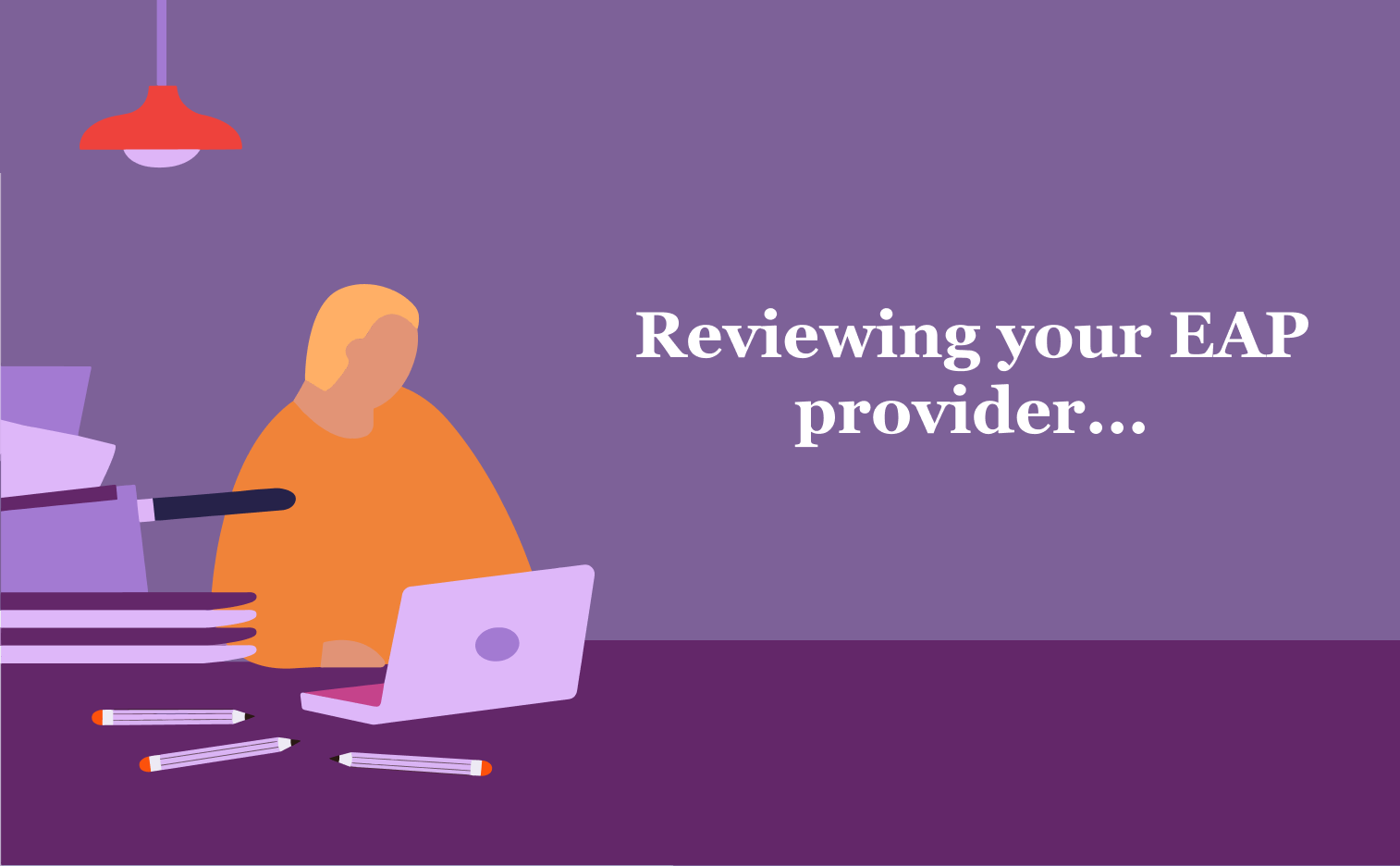Mental Health in the Workplace: What a Healthy Workplace Looks Like and How It Empowers Productive Teams
All over the world, more than half of all people will meet the criteria for a diagnosis of mental illness at some point in their lives. Whether businesses are the cause or not, they are caught up in the fallout when employees suffer from mental health disorders.

All over the world, more than half of all people will meet the criteria for a diagnosis of mental illness at some point in their lives. In 2019, the World Health Organisation found one in every eight people globally were living with a mental disorder, which equates to 970 million people.
Workplaces are inevitably tied to their staff’s distress, and can even be the cause of it.
The WHO estimates 8% of depression cases globally can be attributed to the workplace, which equates to nearly 22.5 million people. Stress, anxiety and burnout are other common work-related problems.
The problem
Whether businesses are the cause or not, they are caught up in the fallout when employees suffer from mental health disorders. The Center for Disease Control (CDC) in the United States found around 80% of adults with depression reported at least some difficulty with work, home and social activities.
McKinsey argues these issues “cost companies money directly for treatment expenses and indirectly, and more expensively, from increased healthcare expenditures, turnover, and diminished productivity.”
As reported by Forbes, the CDC found depression alone causes American employees to miss nearly 200 million workdays a year, at a cost of between $17 to $44 billion.
But just because staff are at work, it doesn't mean all is well. Presenteeism, where employees are inefficient and unproductive, can be extremely costly. The WHO estimates depression and anxiety-induced presenteeism costs the global economy $1 trillion a year in lost productivity.
Further, Springer research identified a relationship between job strain and long work hours with moderate to severe suicidal ideation. It concluded that ensuring staff don’t work more than 40 hours a week could be an important strategy for suicide prevention.
All of this leads to the undeniable conclusion that workplaces can no longer pretend they don’t have an impact on the mental health of their staff. It is incumbent on them, both culturally and economically, to take steps to ensure the wellbeing of their employees.
Defining a healthy workplace - the importance of data
The World Health Organisation defines a healthy workplace as “one where workers and managers collaborate to continually improve the health, safety and wellbeing of all workers and by doing this, sustain the productivity of the business.”
Defining health is always subjective. Cultures, genders and generations all have their own unique perspective on what health is, and workplaces are typically made up of people from diverse backgrounds.
Modern data analytics helps to remove any bias in wellbeing assessment. Simply surveying staff isn’t enough to fully capture their wellbeing, and in-depth data helps to ensure wellbeing strategies are targeted to the right areas.
In order for the wellbeing data to be useful, it must be:
- Timely. Employee engagement surveys often only capture a moment in time, and data can date quickly. Instead, the data should be captured when the person is struggling with issues in the workplace.
- Regular. Data should be collected quarterly to stay relevant and enable wellbeing trends to be recognised.
- Collected safely. Staff need to have total trust that their data is anonymous and won’t end up negatively impacting their career.
- Acted upon. Employees need to believe their workplace will go beyond just lip service and will address culture change and the root causes of poor wellbeing at work.
- Independent. Having a specialist wellbeing provider collect and interpret data means staff can be completely honest in their responses. It also provides valuable context by being able to compare data to industry and societal norms.
Healthy workplace benefits
When it comes to mental health among staff, a healthy workplace not only minimises instances of distress, but it’s also able to identify when staff are struggling, and help to address the issue.
Further McKinsey analysis summarises the relationship between workplace wellbeing and business performance:
“If companies make mental health services more accessible and intervene in the workplace in ways that improve wellbeing, they will simultaneously make investments that will provide real improvements in employee outcomes and consequently in company performance.”
HBR identifies a handful of case studies to back this up:
- Johnson & Johnson estimates wellness programmes saved $250 million on healthcare costs in a decade, and had an ROI of $2.71 for every dollar spent between 2002 and 2008.
- Organisations with effective wellness programmes have nearly half the voluntary attrition rate than those without (9 percent vs 15 percent).
- The Biltmore tourism enterprise saw its voluntary turnover rate more than halve from 19% to 9% in a four year period when it implemented a wellness programme.
Unequivocally, a healthy workplace is one that has a deliberate strategy towards employee wellness and mental health. It doesn’t happen by accident.
In fact, because it requires the investment of both time and money, workplaces that don’t make a conscious effort to promote better mental health often end up negatively impacting their people.
Traits of a good wellness strategy
Going on from the case studies above, HBR looked at a range of studies and analysed 10 organisations whose wellness initiatives all achieved identifiable improvements.
It met with around 300 people, including senior leaders, and identified six pillars of a successful wellness programme.
- Multilevel leadership. Executive leaders and managers lead by example by prioritising their own wellness. There is a dedicated staff member in charge of the wellness programme, and other staff who champion it.
- Alignment. A conscious effort is made to regularly address wellness and seek to improve. Mental health is incentivised, wellness initiatives have a clear link to business performance, and are reported at a governance level.
- Scope, relevance and quality. Good wellness programmes recognise and cater for a range of health issues, including specific mental health needs, and are individualised to each staff member. They’re also fun and of demonstrably high quality, rather than a one size fits all model.
- Accessibility. Initiatives are integrated into regular workplace activity and are widely available, including outside office hours and on mobile apps.
- Partnerships. Internal and external partnerships help to improve credibility and are a cost-effective way of ensuring the quality of the scheme.
- Communications. Workplaces regularly communicate their approach to wellness to encourage participation and overcome geographical and cultural hurdles. This includes using different methods - not just relying on emails, for example.
Rather than implementing a bog-standard wellness strategy as something of a tick-box exercise, organisations should look to develop a premium, multi-faceted strategy to promote staff mental health.
The investment required for such a programme has been shown to pay off time and time again.
Empowering teams with wellness
While a healthy workplace may be hard to define, the ways in which it impacts teams and individuals are more clear.
When people are in an environment where their mental health is prioritised and supported, they:
- Are less inclined to leave for other workplaces
- Build better relationships, and collaborate better
- Contribute more ideas and perspectives
- Are more productive, with less absenteeism or presenteeism
- Are more motivated to perform
Generally speaking, when employees are treated well and feel psychologically safe, they’ll want to perform better and be a part of the company’s success.
The key is for workplaces to be proactive in supporting their people, rather than reactive.
- Reactive workplaces are inefficient because staff are unproductive for a period before they reach breaking point. This can come in the form of burnout, which requires further time and investment to deal with and recover from.
- Proactive workplaces prevent little issues from becoming big ones. They nurture staff to be resilient and give them coping techniques to handle things, both at work and in their private lives. This becomes an opportunity for personal and professional development.
A reactive approach to wellbeing is generally more expensive than a proactive one, because it involves staff inefficiency, absence and attrition. It also doesn’t address the cause of mental health issues, which can linger and repeat again and again.
Organisations that are seen to be supportive of their people will inevitably be better able to attract top talent. People talk, and having a reputation for being a caring, nurturing workplace is important.
Mercer’s Global Talent Trends 2022 study found today’s workers say delivering on wellbeing is one the most important things for them. Workplaces that are seen to do this are increasingly sought after, while those that don’t risk being left behind.
How Clearhead works
Clearhead is a transformative EAP scheme that provides proactive wellbeing services to nurture employee mental health.
It provides a range of digital tools that are available 24/7, as well as a user-friendly online platform to search a network of 300+ therapists. Users that require counselling can identify a therapist they resonate with, giving their relationship a much better chance of success than if a therapist is allocated to them based on availability.
Clearhead’s wellbeing analytics are comprehensive, and significantly more thorough than other EAP schemes. Each organisation receives a thorough 20 page quarterly report with clear recommendations, compiled by a clinical psychologist with an organisational psych background.
It includes aggregated, anonymous data around the causes for staff distress, how they’re coping with daily demands and the impact work is having on their lives. Having this greater focus on wellbeing data enables organisations to get a more accurate idea of what their culture is, and make informed decisions around wellness initiatives.
To find out more about how a modern day employment wellness solution can transform mental health in your workplace, book a free, no strings attached demo today.





